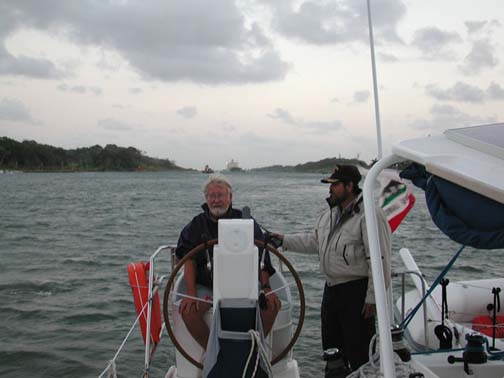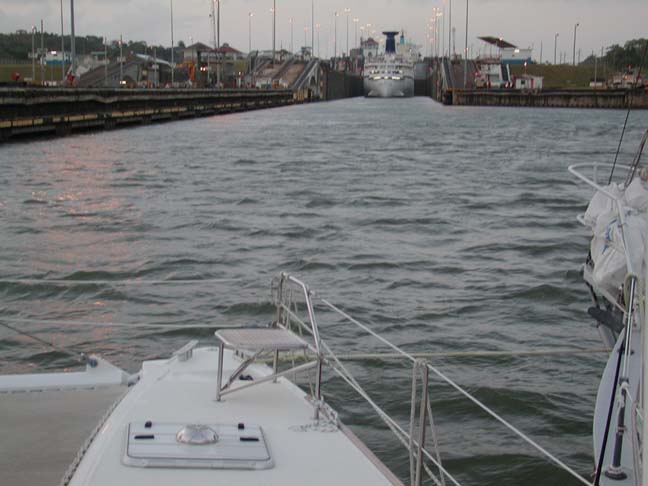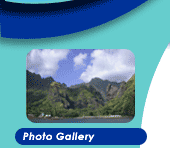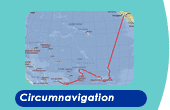February
19, 2001
Panama,
Central America
Pacific Bliss Transits “the Big Ditch”
By Lois Joy  
The alarm went off well before dawn. I splashed cold water on my face,
and took a quick sponge bath, using a pint or so of water in our bathroom
sink. Richard already had the coffee on. This would be our big day;
the day Pacific Bliss would finally see the Pacific, her ocean! A Canal
Pilot was scheduled to board at 5:15 AM.
We picked up our Panamanian line handlers, NG and Alfonso, at the Panama
Canal Yacht Club (PCYC) last night, bringing them back in our dinghy
to “the Flats” where we were anchored to spend the night on
Pacific Bliss. Drinking coffee, our expanded crew of six readied the
boat to leave, hoping that the anchor would pull up easily. It had held
firm in the muddy flats, with all the wind and swell, since we had arrived
there on February 14th. Cruisers always find something to worry about!
Our pilot arrived promptly, jumping agilely from the PCC launch that
delivered him. Pacific Bliss was well protected with fenders, but the
launch never even touched our boat. The anchor routine went well, thank
God, and we were soon motoring to the entrance to the Gatun locks, our
pilot directing Gunter at the helm. By 6:00 AM, we were at the Canal
awaiting further instructions.

Our PCC pilot directs Captain Gunter to the locks.
Two monohulls, Mallory, flying a French flag and Iwalani, flying a
nautical version of the Stars and Stripes, joined us before the locks.
We would be “nesting,” through the locks, our pilot explained.
There are four possible methods of going through the locks in a sailboat:
(1) nesting, (2) center chamber, (3) side tie (against the sidewall),
and (4) alongside a PCC tug. When the PCC Admeasurer visited Pacific
Bliss a few days ago to measure the boat and process our papers, he
had explained these approaches to us and had checked the ones we were
willing to use. The more options we allowed, the higher would be the
odds of going through quickly. We had approved all approaches except
for the sidewall tie, which has reportedly damaged quite a number of
small vessels.
Nesting is rafting two or three boats together so that they go through
the locks as a unit. When three are nested, the yacht with the best
ability to maneuver the group will be in the center. Pacific Bliss,
with its two engines, and a Pilot on board, rather than an Advisor,
was chosen for the center.
Being the most senior person, our Pilot was clearly in command. He
projected a calm demeanor gained from 20 years of experience and Grade
A status as he carefully directed all three captains and the two PCC
Advisors through a well-coordinated rafting procedure. We quickly nested,
bow lines, stern lines and spring lines in place. Pacific Bliss had
eight fenders out as well as five tires, which we had wrapped with sturdy
garbage bags secured with shipping tape. The Pilot instructed all three
captains to keep their engines running. We followed Danae, a Panama
cruise ship, into the first set of locks. She was secured in the locks
by mules, locomotives attached by cables that bring the ship along.
The cables from the ship to the mules exert a pull of up to 40,000 pounds
each. They do occasionally break. Danae left a swirling wake behind
her as Gunter was instructed to motor forward behind her.

Pacific Bliss enters Gatun locks at dawn.
Page
2
|











